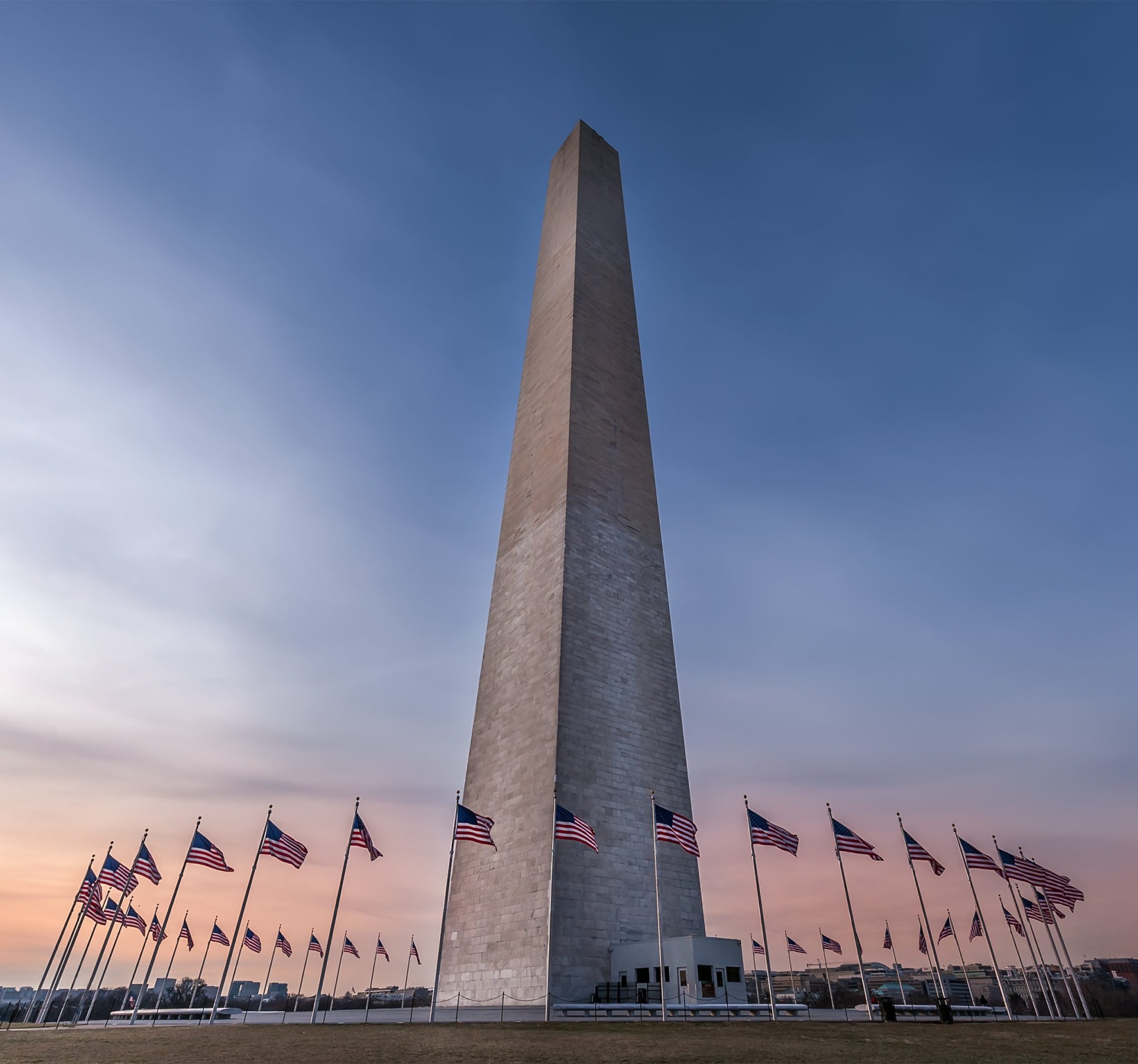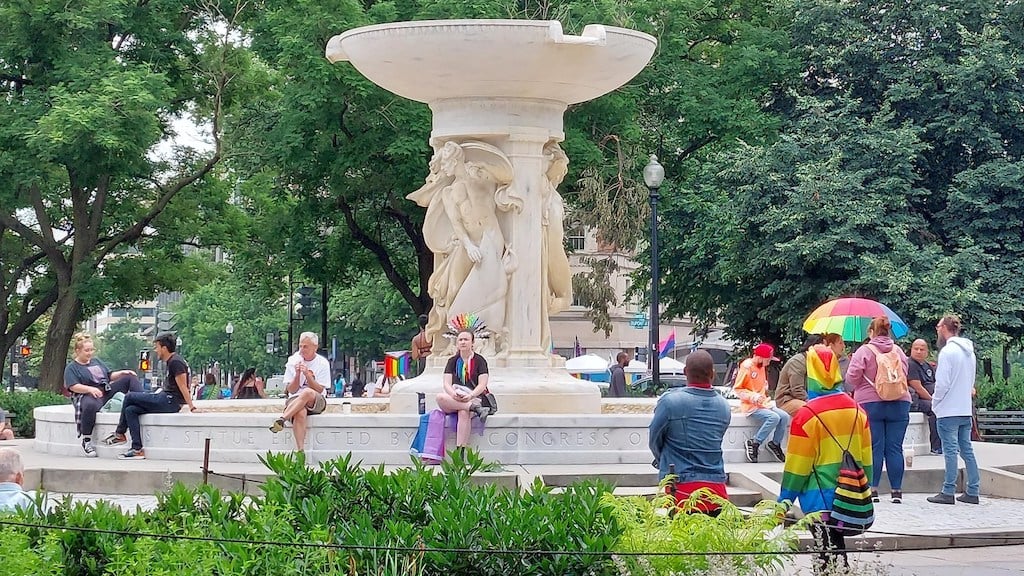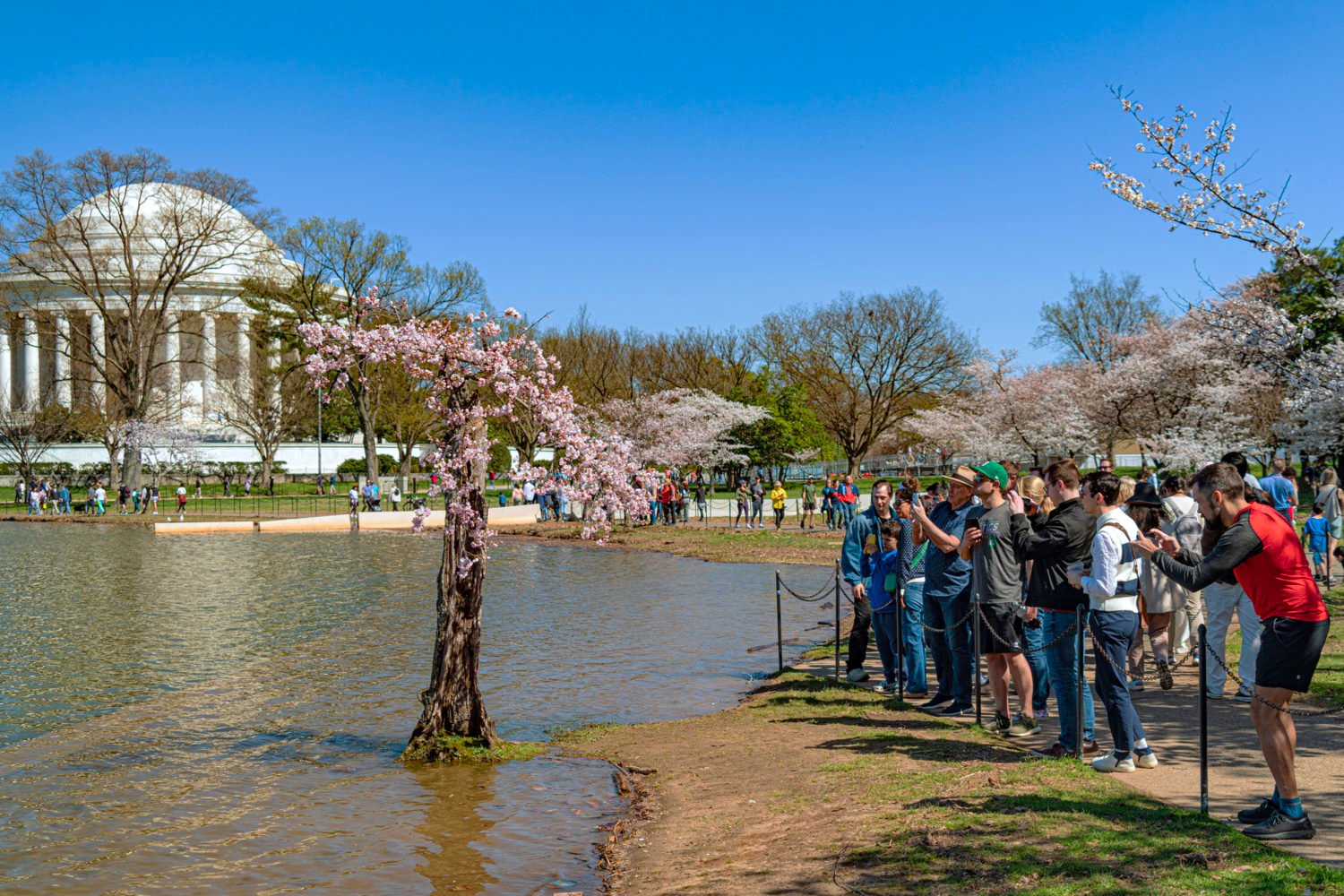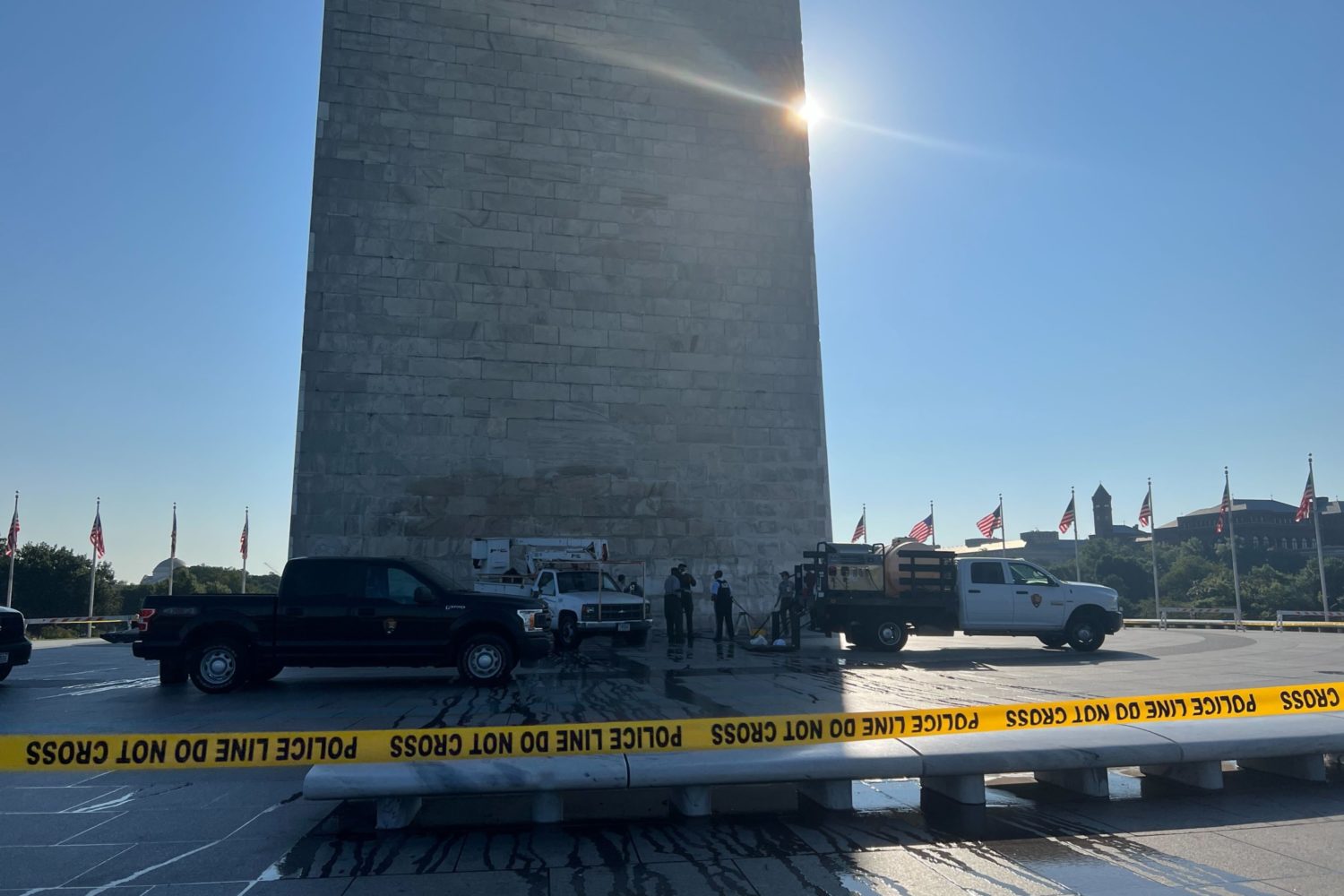When the Washington Monument reopens next month, statistics suggest it might welcome a declining number of visitors, Katishi Maake reports for Washington Business Journal:
Visitation at the monument has been in decline in recent years, only seeing 493,550 visitors in 2015 — its most recent fully operational year. Compare that to its heyday in the mid 20th century, when the monument saw 2.059 million visitors in 1966, according to the park service. The monument has not seen more than 1 million visitors in a year since 1994.
What could explain tourists staying away from one of Washington’s most recognizable landmarks? In a perusal of the available internet artifacts, several theories obtain:
• Frustration about commemorative stones
One hundred and ninety-three memorial stones line the east and west interior walls of the monument. Each commemorates the contribution a particular entity—among them Masonic lodges, states, and fire companies—made to the monument’s construction in the 19th century. A National Park Service guide to visiting the monument says that “Due to issues of resource protection and visitor safety, the public receives limited access to the memorial stones, but can view several of them while riding the elevator” and offers a link to a photo gallery of them.
If you think a slideshow might quell interest in seeing these stones, though, you haven’t read the reviews on TripAdvisor, where the tablets’ obscurity is an object of surprising obsession. “[W]e were told we’d get a chance to see a few of them after we left the top of the tower,” one person wrote in 2009, expressing disappointment that the stones are visible from the elevator “IF, and only if you are one of maybe four people standing next to the door.” Another wrote in 2014 that the elevator doesn’t stop long enough to photograph the stones: “be sure to have your cameras ready on the way down because they don’t stop for pictures.” The stones are “only seen at a glance in 2 short intervals on the way down to ground level,” another wrote in 2016. Who knew they were such a draw?
• Seeing it all over town gets kind of old
It’s a myth that the Height Act protects views of the monument, but it’s not like anyone was going to miss a 555-foot-high obelisk without legislative intervention, anyway. For one TripAdvisor reviewer, however, the big marble stick’s omnipresence led to tedium: “eventually you see this monument from everywhere you go, so you start to lose that magical feeling,” Steve L. of Santa Monica, California, wrote this past April.
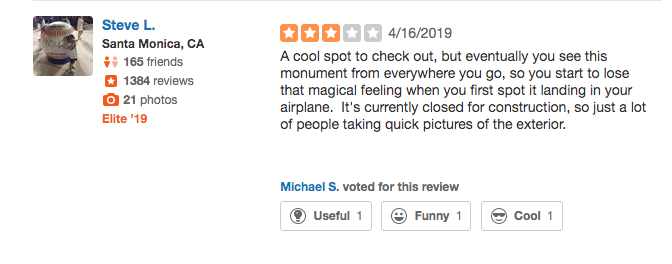
Other reviews betray an…approximate grasp of what a visit to the monument might require: “I am hoping to get my husband on this,” one person wrote in July, looking for advice. “He is afraid of heights though.” Another person thought the price to enter was right: “There is no fee to enter as it is just a huge stone.” Ashley M of Orange County, California, agreed that the whole experience was kind of underwhelming: “It was a great 360-degree view of the entire city, but that’s it,” she wrote in 2010. “There’s no historical artifacts or really any kind of information to be learned from going up to the monument.”

And there are the usual complaints about rangers’ interpretive style, especially as evinced by someone who visited on Washington’s birthday in 2011, and found to their dismay that when “a teen asked how old Washington would have been” were he somehow still alive nearly three centuries after his birth, “the ranger didn’t know. Wow.”
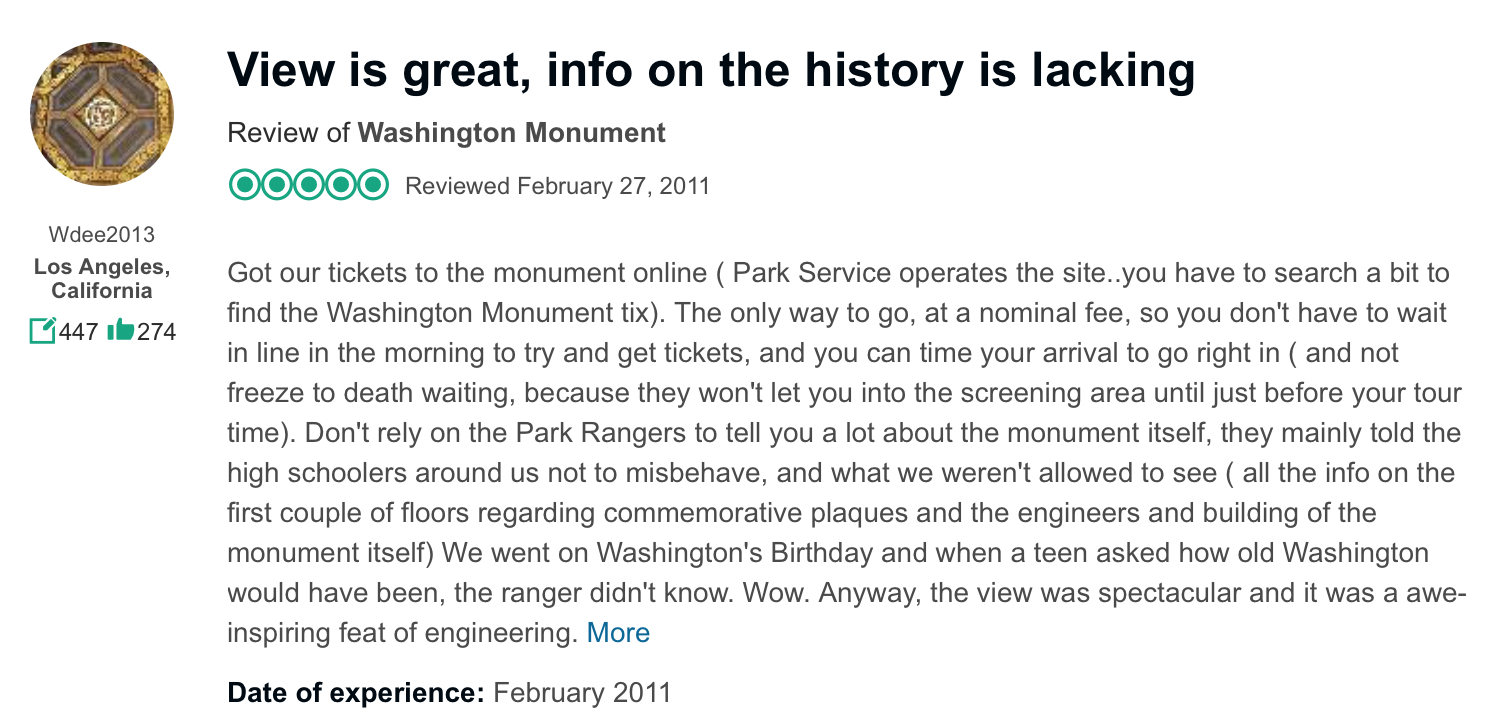
• Fox News viewers may still believe the monument is tilting
After an earthquake struck the DC area in August 2011, Megyn Kelly reported on Fox News that according to a DC police officer, “they are concerned that the Washington Monument may be tilting.” This was news to the National Park Service, whose late spokesperson Bill Line told the Washington Post he’d first heard about the obelisk’s supposed bias from Fox: “Wouldn’t it be incumbent on a news organization to check out the facts?” he asked, apparently rhetorically.

